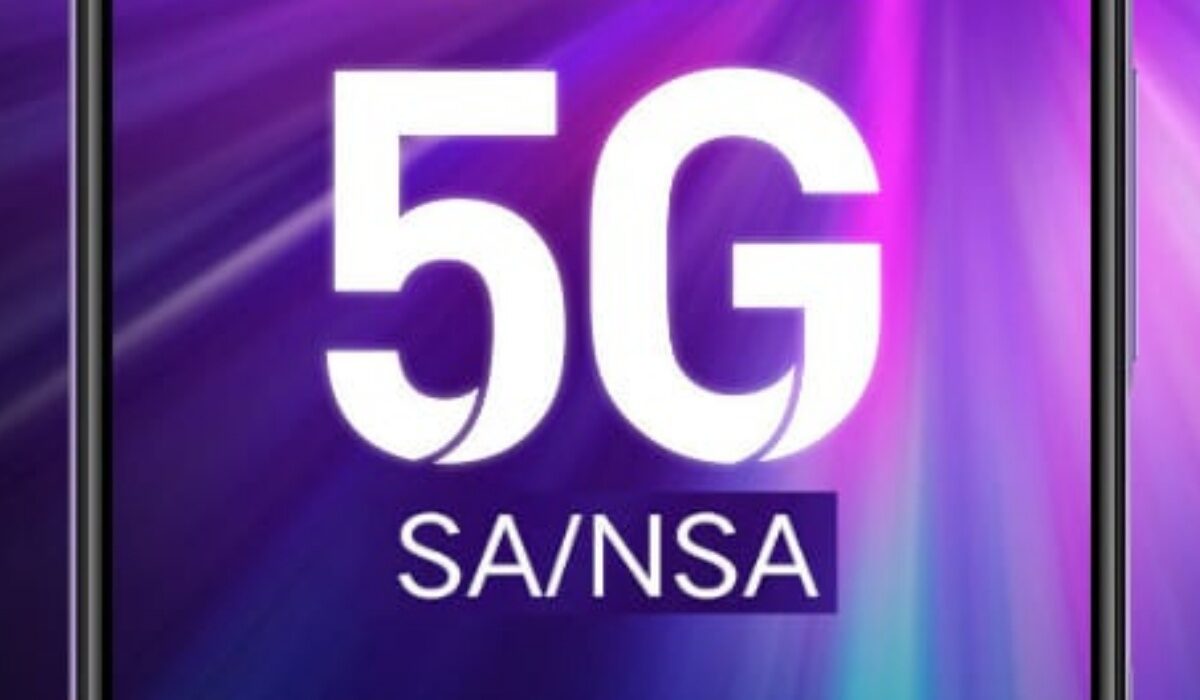Standalone 5G (SA) and non-standalone 5G (NSA) are two different deployment models for 5G networks.
While looking through the specs of a 5G phone, you will see the terms, NSA 5G and SA 5G, somewhere along the line. In some cases, a phone is listed as supporting only NSA 5G, while in some other cases, it is SA 5G. There are also lots of phones listed as supporting both NSA 5G and SA 5G. These are called 5G dual mode devices.
What do the terms NSA 5G and SA 5G mean, and what are the practical implications on you, the mobile user? What should you look for when shopping for a 5G smartphone?

Table of Contents
Two types of 5G: NSA 5G and SA 5G
NSA stands for non-standalone, while SA stands for standalone. These are the two types of 5G: Non-standalone 5G and standalone 5G. Let’s break these terms down, so you understand what they are about. If you are a technical person, remember that this article is meant to explain the two terms to non-technical people.
NSA 5G (Non-standalone 5G) is a basic version of 5G that is dependent on 4G LTE infrastructure. Think of it as adding a new SSD drive to your old PC or laptop. It gives it improved performance. NSA 5G uses 4G cell towers and base stations to deliver more bandwidth and faster speeds than 4G. But it does not deliver the maximum bandwidth and speeds that 5G is capable of. Smartphones listed as supporting 5G NSA work with this type of 5G network.
SA 5G (Standalone 5G), on the other hand, uses dedicated 5G towers and base stations. It is referred to as full/proper 5G, because it is this kind of 5G network that delivers the full capabilities of 5G. With Standalone 5G, you get to experience much better speeds, greater bandwidth, and low latency.
A good, layman’s summary of the difference between NSA 5G and SA 5G is that the former uses a mixture of wireless technologies (4G and 5G), while the latter uses only 5G technologies all through.
Since mobile carriers and networks already have 4G infrastructure on the ground, using NSA 5G is an easy way to roll out 5G quickly. So, many carriers and operators indeed roll out their 5G services first on NSA 5G, and later upgrade to SA 5G.
For example, in the United States, carriers like T-Mobile, Verizon, and AT&T all rolled out NSA 5G initially, and then began a migration to SA 5G. T-Mobile became the first carrier in the world to provide nationwide Standalone 5G service.
The American scenario is similar to what happened in Australia, where Telstra, Optus and Vodafone all rolled out with NSA 5G first, and then commenced migration to SA 5G. In emerging economies, like Nigeria, Kenya, and India, 5G deployment is likely to be done via Non-standalone for a number of years before an upgrade to standalone systems, for reasons of cost and ease of rollout.
To summarize the differences between NSA and SA 5G, you can get better performance by tweaking or replacing the engine of your old car, or you can buy a newer car model that is built from the ground up with a more powerful engine, better gear system, better suspension, etc. The former is what happens with non-standalone 5G, while the latter is what happens with standalone 5G.
Standalone 5G vs non-standalone 5G, in summary
The main difference is that SA uses a 5G core network and a 5G radio network, while NSA uses a 4G core network and a 5G radio network. Some of the practical differences are:
- SA offers more features and capabilities than NSA, such as ultra-low latency, network slicing, and edge computing.
- SA is more efficient and simplified than NSA, as it does not rely on 4G infrastructure and can optimize the use of 5G spectrum and resources.
- NSA is faster and easier to deploy than SA, as it leverages existing 4G infrastructure and can provide higher data speeds and reliability to users.
- NSA is more suitable for initial rollouts of 5G networks that focus on enhanced mobile broadband (eMBB) services, while SA is more suitable for advanced 5G use cases that require ultra-reliable low latency communications (URLLC) and massive machine type communications (mMTC) services.
What to look for when buying a 5G smartphone
There are 5G phones in the market that support both NSA and SA networks. These are called dual mode 5G phones. This has become the norm, and you should not be buying any phone that is not dual mode 5G, unless cost is a factor.
Having a dual mode 5G phone means you are covered, regardless of the kind of 5G network your carrier or mobile network deploys.
Lastly, from the explanations I have provided above, if you really want to enjoy the full benefits of 5G, get on a standalone 5G network and make sure your device supports it.
